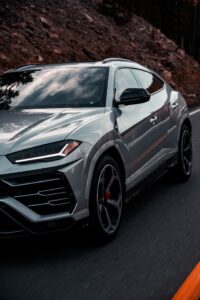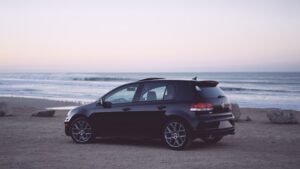
SUV Safety Features: What You Need to Know
Contents
- 1 Child-safety seats should be secured in the backseat of SUVs
- 2 Airbags should be checked regularly
- 3 Tires should be checked often
- 4 Blind spot monitoring and rear cameras are important safety features to look for in an SUV
- 5 With these tips, you can be sure that your SUV is as safe as it can be.
- 6 Conclusion
If you’re in the market for a safe SUV, it can be hard to know where to start. There are so many different options and so much information out there that it can be overwhelming. If you’re looking for ways to make sure your next SUV is as safe as possible, here are some tips to help:
Child-safety seats should be secured in the backseat of SUVs
If you have a child, it’s important to know how to keep them safe in your SUV. The safest place for a child is in the backseat, not in the front seat. This is because of two things: airbags, and space.
- Airbags can be dangerous for children who aren’t properly restrained by an appropriate car seat or booster seat. If they are hit by an airbag while riding in their car seat (or other restraint), they could be seriously injured or even killed as a result of being propelled forward into another object such as another occupant or window frame; ejected from their vehicle; crushed beneath collapsing metal parts (such as doors); burned by hot gases released during deployment; struck by other people getting out of their vehicles after an accident occurs; etcetera… You get the idea!
- Also note that there’s more room in rear seating areas than up front–not only does this mean there’s more space between yourself and any passengers who may need help exiting safely after an accident happens but also makes it easier for drivers/passengers alike when trying not only escape themselves but also reach others who may need assistance doing so too.”
Airbags should be checked regularly
Airbags should be checked regularly. In fact, it’s recommended that you check them at least once per year or every 20,000 miles (32,000 kilometers) to make sure they are working properly.
If your airbag has been deployed in an accident and needs replacing, contact your dealership as soon as possible so they can order the correct part for your vehicle. Once you have the new part installed by a certified technician and have been given permission from your insurance company or leasing company if applicable, you’ll be able to drive safely again!
Tires should be checked often
There are many safety features that can be found in an SUV. One of these features is tires, which should be checked at least once a month. There are several things you should look for when checking your tires:
- Pressure – Make sure they’re inflated to the correct PSI (pounds per square inch) listed on the door jamb sticker or owner’s manual.
- Tread depth – If you can see any part of your tire’s treads when looking straight down at them from above, it’s time to replace them! Also keep an eye out for cracks or bulges in the sidewalls–that means damage has occurred and could lead to a blowout if not addressed quickly.
- Condition – Routinely inspect all four sides of each tire for cuts, scuffs and other signs of damage so that you’ll know when it’s time for replacement before something bad happens!
Blind spot monitoring and rear cameras are important safety features to look for in an SUV
- Blind spot monitoring: This feature uses sensors to detect vehicles in your blind spots and alerts you if they’re approaching.
- Rear camera: The rearview mirror doesn’t just let you see what’s behind your vehicle; it also helps guide the way with a camera that displays what’s behind it on an LCD screen inside the cabin.
- Backup sensors: If a sensor detects an object while backing up, an alarm sounds to alert drivers so they can stop or move forward safely–and avoid hitting anything!
- Rear parking sensors: These devices use ultrasonic waves (similar to sonar) or electromagnetic waves (like radar) to determine how close objects are when driving in reverse and warn drivers when there’s danger nearby, helping them park easily without damaging their cars or others’ property
With these tips, you can be sure that your SUV is as safe as it can be.
- Child-safety seats are a must. You may think that they’re just for babies or toddlers, but they’re also important for older kids who haven’t yet outgrown them. According to the National Highway Traffic Safety Administration (NHTSA), children under age 13 should always ride in the rear seat of an SUV when one is available–and if not, then in booster seats until they’re old enough for regular seatbelts (around age 8). This is because rear-end collisions are more likely to injure young passengers than front-end collisions because their bodies aren’t protected by airbags or strong frames like those found on other vehicles such as sedans and trucks.
- Check your airbags regularly to make sure they work properly after any collisions or significant changes in temperature (such as going from winter temperatures indoors into summer heat outdoors). Also check the date on each bag’s tag; if it’s past its expiration date, replace it immediately!
Conclusion
We hope that this article has given you a good idea of what safety features to look for in an SUV. We know that these vehicles can be expensive, but they are worth it if they help keep your family safe when driving around town or on long trips.






